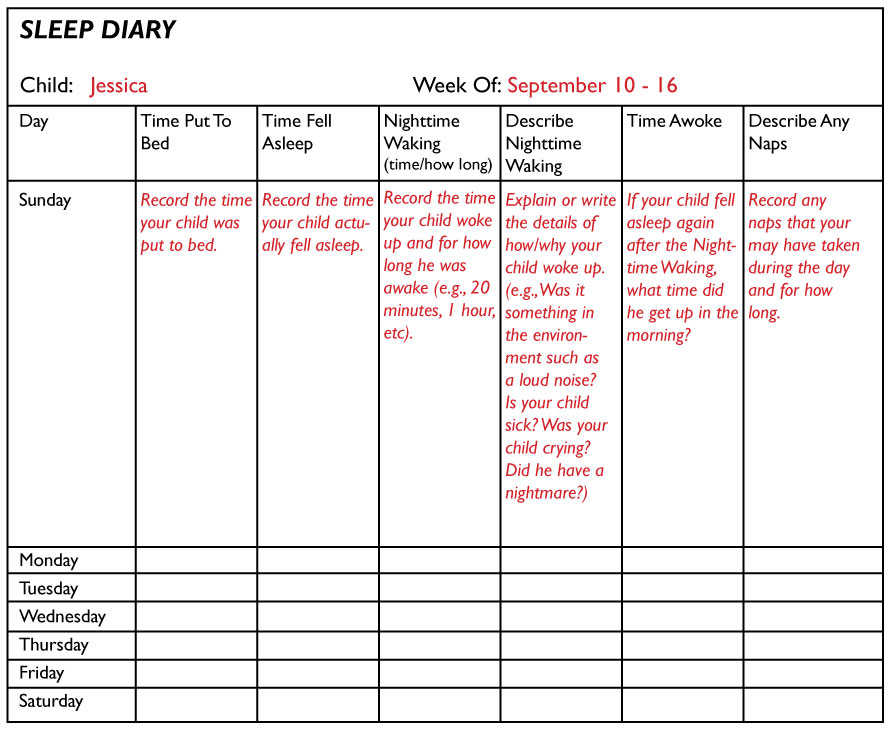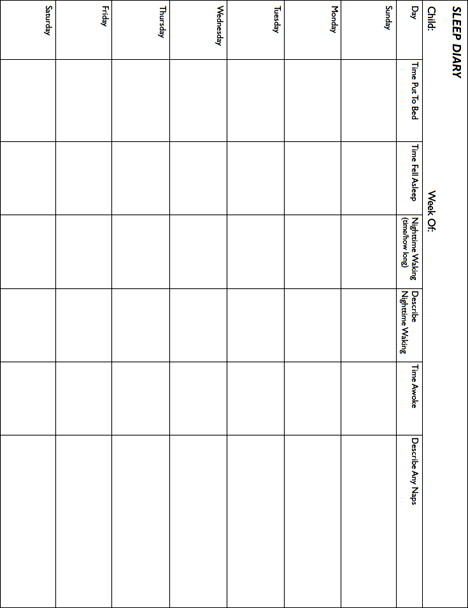Sleep time/naptime can be very challenging when a child resists going to sleep or when he is restless during sleep. As a parent or caregiver you have probably had difficulty settling you child down to sleep at one time or another. If you continue to have difficulty with settling your child down to sleep, even after following the suggestions from our “Bedtime Routines” or “Naptime Routines” tip sheet, you may want to try keeping a Sleep Diary.
A Sleep Diary allows you to record information from every sleep routine that will help you to see any unusual patterns of sleep. The information you collect can help you identify or see where changes should be made in your child’s routine.
Let’s take a look at some things you’ll be recording in the Sleep Diary:

Keep track of these items for at least two weeks to find out about your child’s sleep pattern. Here are some things to consider when reviewing the completed
Sleep Diary:
- the amount of time it takes for your child to fall asleep (e.g., Does it take ten minutes or two hours?)
- how often, and for how long is your child’s sleep disrupted (e.g., How many times does your child wake up?)
- are night terrors keeping him awake?
- is your child not tired at naptime?
- is the bedtime/naptime routine interfering with your child’s ability to fall asleep on his own?
- information about the time your child wakes up every morning and naps during the day can reveal the total amount of sleep time – Is he getting enough sleep, too little sleep, or too much sleep?
Tracking this information will help you identify the type of sleep problem your child may be experiencing and will help you to begin to plan for change. Also, if you seek assistance from your child’s paediatrician you can show them the Sleep Diary and he may be able to offer you suggestions to help solve your child’s sleep problems.
Keep in mind that sleep problems are very common in children of all ages. A child may experience poor sleep during a brief period in their life, like holidays, a stressful event, or illness. For some children, not being able to settle down to sleep may occur only occasionally and for others it may be more chronic.

